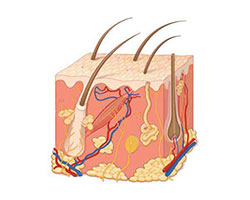
| Therapeutic Area(s) | Immunology |
Allergies arise when the body's immune system overreacts to foreign substances (allergens), which are usually harmless. Allergies can be segmented into two types: immunoglobulin E (IgE) mediated and non-IgE mediated.

| Therapeutic Area(s) | Metabolic | Others |
Niemann–Pick type C (NPC) disease is a rare progressive genetic disorder, characterized by the inability of the body to transport lipids and cholesterol inside the cells.

| Therapeutic Area(s) | Dermatology | Others |
Psoriasis is a medical condition that includes chronic inflammation and scaling on skin and develops when skin cells rapidly grow below the surface of the skin and get deposited on the surface before they get mature.

| Therapeutic Area(s) | Oncology | Others |
Pancreatic cancer results in the development of malignant cells in the pancreas, which leads to the formation of tumor. The tumor can be further categorized into exocrine tumor and endocrine tumor.

| Therapeutic Area(s) | Neurology | Others |
Restless legs syndrome (RLS) can be described as a neurological sleep disorder causing intense and irresistible urge in moving legs. It can either occur genetically or as a result of various medical problems such as Parkinson’s disease, iron deficiency, diabetes, peripheral neuropathy, and others. Symptoms of this disease include itching, aching, crawling, burning, throbbing, tingling, and creeping.

| Therapeutic Area(s) | Neurology | Others |
LGS is a severe form of epilepsy that occurs rarely and mostly affects pediatrics. This disease has the tendency to develop between the age of one to eight years in children, and can be characterized by polymorphic seizures and neuropsychological decline. The exact cause of this syndrome is unknown. It may be symptomatic, which is secondary to an underlying brain disorder.

| Therapeutic Area(s) | Nephrology | Others |
IgA nephropathy, also known as Berger’s disease, is a kidney disorder that occurs when IgA antibody gets settled in kidneys. This leads to inflammation that with time hinder kidney’s ability to filter waste from blood. IgA nephropathy is the key source for Glomerulonephritis, where the functional unit of the kidney, that filters blood gets inflamed.

| Therapeutic Area(s) | Ophthalmology | Others |
Glaucoma refers to a group of diseases that tend to damage the optic nerve, resulting in vision loss and blindness. It is usually caused due to fluid building up in the anterior part of the eye, which increases pressure inside the eye. It can affect people of all ages but is most common in adults aged between 70 to 80 years. If not treated, people with glaucoma slowly lose their peripheral vision and miss objects to the side and out of the corner of their eye. Over time, straight-ahead vision may decrease until no vision remains.